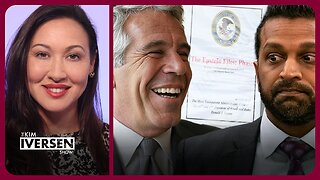Premium Only Content

Powerful Presentation Components
Powerful Presentation Components
Powerful Presentation Components (Description)
Creating a powerful presentation involves combining various components
effectively. Here are key elements to consider:
Clear Objective: Start by defining the purpose of your presentation.
Is it to inform, persuade, instruct, or entertain? Your objective
guides the content and style of your presentation.
Engaging Opening: Capture your audience's attention right from the
start. This could be a surprising statistic, a provocative question, a
relevant anecdote, or a compelling quote.
Well-Structured Content:
Introduction: Briefly outline what you will cover.
Body: Present your main points in a logical sequence. Use sub-points
to elaborate.
Conclusion: Summarize the key messages and leave your audience with a
strong, memorable point or call to action.
Visual Aids:
Slides: Use slides to support your talk, not to deliver it. They
should enhance understanding, not distract.
Graphics and Charts: These should be simple, clear, and relevant.
Videos: Short clips can be very effective if directly related to your content.
Storytelling: Narratives can make your presentation more engaging and
relatable. Use stories to illustrate points, show real-world
applications, or make data more understandable.
Audience Engagement:
Ask questions to involve the audience.
Use polls or interactive tools if available.
Encourage participation or discussion.
Effective Delivery:
Voice: Vary your tone, pitch, and pace to maintain interest.
Body Language: Use gestures and facial expressions to convey
enthusiasm and confidence.
Eye Contact: Connect with your audience by looking at them.
Use of Data and Research: Back up your points with relevant data and
research. Ensure your sources are credible and your interpretation is
accurate.
Handling Q&A: Be prepared to answer questions. Listen carefully,
acknowledge the question, and respond clearly and concisely.
Rehearsal: Practice your presentation multiple times. This helps in
refining content, improving delivery, and managing time.
Feedback: If possible, get feedback on your presentation from a test
audience and make adjustments as needed.
Technical Check: Before presenting, ensure all technical aspects (like
projector, microphone, etc.) are working.
Remember, the key to a powerful presentation is not just in the
content, but in how you connect with your audience and convey your
message effectively.
Powerful Presentations 4
Certainly! Creating powerful presentations involves a combination of
effective content, engaging visuals, and confident delivery. Here are
some tips to help you create and deliver a compelling presentation:
Know Your Audience:
Understand who your audience is and tailor your presentation to their
interests and level of understanding.
Clear Message:
Have a clear and concise message. Clearly articulate what you want
your audience to take away from your presentation.
Structured Content:
Organize your content in a logical structure. Use a clear
introduction, body, and conclusion. Consider using a storytelling
approach to make your message more memorable.
Engaging Visuals:
Use visuals such as slides, charts, and images to support your
message. Make sure they are visually appealing and relevant to your
content.
Limit Text:
Avoid overcrowding slides with too much text. Use bullet points and
keep sentences short. Your slides should complement your spoken words,
not replace them.
Practice, Practice, Practice:
Rehearse your presentation multiple times to become familiar with the
content. Practice in front of a mirror, record yourself, or present to
a friend to get feedback.
Confident Body Language:
Stand tall, make eye contact, and use gestures to enhance your
message. Confident body language can help establish a connection with
your audience.
Engage the Audience:
Encourage audience participation. Ask questions, use polls, or
incorporate interactive elements to keep your audience engaged.
Manage Time Effectively:
Be mindful of your time and stick to the allotted presentation time.
Practice pacing to ensure you cover all key points without rushing.
Handle Q&A Gracefully:
Anticipate potential questions and prepare thoughtful responses. Be
open to audience questions and address them with confidence.
Use Technology Wisely:
If you're using technology, make sure everything is set up and tested
before your presentation. Familiarize yourself with the tools you'll
be using.
Tell Stories:
People connect with stories. Share relevant anecdotes or case studies
to make your points more relatable.
Remember that a powerful presentation is not just about what you say
but also about how you say it. Confidence, clarity, and engagement are
key components.
Invite, Excite, Engage, And Support 3
It sounds like you're referencing a set of principles or a strategy,
perhaps for teaching, marketing, or leadership. "Invite, Excite,
Engage, and Support" can be a powerful framework in various contexts.
Here's a brief overview of what each step could entail:
Invite: This is about creating an initial welcoming and inclusive
atmosphere or proposition. It's the stage where you attract attention
and interest, whether it's inviting students to learn, customers to
explore a product, or team members to participate in a project.
Excite: Once you've got the attention, the next step is to stimulate
interest and enthusiasm. This could be through presenting intriguing
information, showcasing unique features of a product, or highlighting
the rewarding aspects of a project.
Engage: Engagement is about maintaining interest and involvement. This
could be through interactive teaching methods, engaging marketing
content, or collaborative work in a team setting. The goal is to keep
participants active and involved in the process.
Support: This final step ensures that ongoing assistance, resources,
and encouragement are provided. In an educational context, this means
helping students overcome challenges; in business, it's about
providing customer service and after-sales support; in a team, it's
about ensuring members have the resources and help they need to
succeed.
This framework is adaptable and can be a useful guide in planning and
executing strategies in various areas such as education, marketing,
team management, and more. If you have a specific context in mind, I
can provide more tailored insights.
Ways To Create Great Presentations 2
Creating a great presentation involves a combination of effective
content, engaging visuals, and confident delivery. Here are some tips
to help you create impactful presentations:
Understand Your Audience:
Know who your audience is and tailor your content to their interests
and knowledge level.
Clear Objective:
Define a clear purpose for your presentation. What do you want your
audience to take away from it?
Structured Content:
Organize your presentation with a clear introduction, main points, and
a conclusion. Use a logical flow to guide your audience through the
information.
Engaging Opening:
Start with a compelling introduction to grab your audience's
attention. This could be a relevant quote, a surprising fact, or a
thought-provoking question.
Visuals and Graphics:
Use visuals, such as slides, charts, and graphs, to make your
presentation more visually appealing and easier to understand.
Minimal Text:
Avoid cluttering your slides with too much text. Use bullet points and
concise phrases to convey your message.
Consistent Design:
Maintain a consistent design theme throughout your presentation. This
includes font styles, colors, and layouts.
Practice:
Rehearse your presentation multiple times to become familiar with the
content and improve your delivery. Practice in front of a mirror or
record yourself to identify areas for improvement.
Engage Your Audience:
Encourage audience participation through questions, polls, or
interactive elements. This helps keep your audience attentive and
involved.
Tell Stories:
Use anecdotes or real-life examples to illustrate your points. Stories
can make your presentation more relatable and memorable.
Use Humor:
When appropriate, include humor to lighten the mood and make your
presentation more enjoyable.
Time Management:
Be mindful of the time allotted for your presentation. Practice pacing
to ensure you cover all key points without rushing.
Address Questions Confidently:
Anticipate potential questions and be prepared to address them
confidently. This demonstrates your knowledge and expertise.
Feedback and Improvement:
Seek feedback from others and be open to making improvements.
Continuous refinement can lead to a more polished presentation.
Closing Impact:
End your presentation with a strong closing statement or a call to
action. Leave a lasting impression on your audience.
Remember, a great presentation combines effective communication skills
with thoughtful content and engaging visuals. Practice and preparation
are key to delivering a successful presentation.
Plan, Prepare, Practice, Present, and Plan 1
The sequence of "Plan, Prepare, Practice, Present, and Plan" is a
comprehensive approach often used in various fields such as business,
education, public speaking, and project management. Each step plays a
crucial role in ensuring the success of a project or presentation.
Here's why each step is important:
Plan: This is the initial stage where goals and objectives are set. It
involves identifying what you want to achieve and outlining a strategy
to reach these goals. Effective planning sets a clear direction and
helps to focus efforts on key priorities. It also involves considering
potential challenges and how to address them.
Prepare: Once the plan is in place, the preparation phase involves
gathering resources, organizing materials, and setting up the
necessary infrastructure to execute the plan. This step is critical to
ensure that everything needed to implement the plan is available and
ready. Preparation often involves detailed work and can significantly
impact the quality and effectiveness of the execution.
Practice: Practice is especially important in contexts like public
speaking, performing arts, or sports. In a business or project
context, this could be akin to rehearsing or running simulations. This
step is about refining skills, testing the plan in a controlled
environment, and making adjustments based on feedback. It helps to
build confidence and ensures that any potential issues are ironed out
before the actual execution.
Present: This is the execution phase where the plan is put into
action. In a presentation or performance, this is when you deliver
your material to an audience. In a project context, this could be the
launch or implementation phase. The success of this stage heavily
depends on how well the previous steps were executed.
Plan (Again): Planning again after presenting is a key step often
overlooked. It involves reviewing the outcomes, analyzing what worked
and what didn't, and using these insights for future improvement. This
reflective planning helps in continuous learning and development,
ensuring that each cycle of the process becomes more refined and
effective.
In summary, each step in this cycle ensures thorough preparation and
continuous improvement, leading to higher chances of success in any
endeavor.
--
Thanks,
Jack Bosma
Solveres Independent Solution Representative and District Manager
https://meetn.com/jackbosma
https://www.solveres.com/store/jackbosma/i/102/contact/
https://www.udemy.com/courses/search/?src=ukw&q=solveres
https://www.mightynetworks.com/find Solveres
"Inspect what you expect."
https://rumble.com/v47gw7i-powerful-presentation-components.html
-
 LIVE
LIVE
Glenn Greenwald
1 hour agoTrump DOJ: There's Nothing to the Epstein Story; State Dept: Syria's Al-Qaeda are No Longer "Terrorists;" Trump & Lula Exchange Barbs Over Brazil | SYSTEM UPDATE #482
11,577 watching -
 LIVE
LIVE
Barry Cunningham
1 hour agoHERE'S WHY SOME IN MAGA ARE SO NEGATIVE ABOUT PRESIDENT TRUMP?
2,314 watching -
 LIVE
LIVE
The Jimmy Dore Show
1 hour agoTrump Administration SLAMS SHUT Epstein Case! Elon to Launch New Political Party! w/ Twila Brase
6,908 watching -
 38:26
38:26
Donald Trump Jr.
2 hours agoThis 4th of July, A Nation Renewed, Plus Interview with Grab a Gun CEO Marc Nemati |TRIGGERED Ep.256
87.2K113 -
 1:06:51
1:06:51
BonginoReport
3 hours agoEpstein: Is It Time To Take Off The Tinfoil Hat? - Nightly Scroll w/ Hayley Caronia (Ep.84)
47.2K106 -
 LIVE
LIVE
RalliedLIVE
6 hours ago $1.62 earnedSHOTTY BOYS vs THE WORLD - WARZONE CHALLENGES
272 watching -
 LIVE
LIVE
SpartakusLIVE
6 hours ago$18,000 2v2 WZ Total Frenzy Tournament || #1 Comp Champ is BACK
258 watching -
 LIVE
LIVE
The Mike Schwartz Show
4 hours agoTHE MIKE SCHWARTZ SHOW Evening Edition 07-07-2025
4,253 watching -
 LIVE
LIVE
LFA TV
1 day agoLFA TV ALL DAY STREAM - MONDAY 7/7/25
832 watching -
 1:18:05
1:18:05
Kim Iversen
3 hours agoThey Think You’re Stupid: Epstein Case Closed
92.7K82